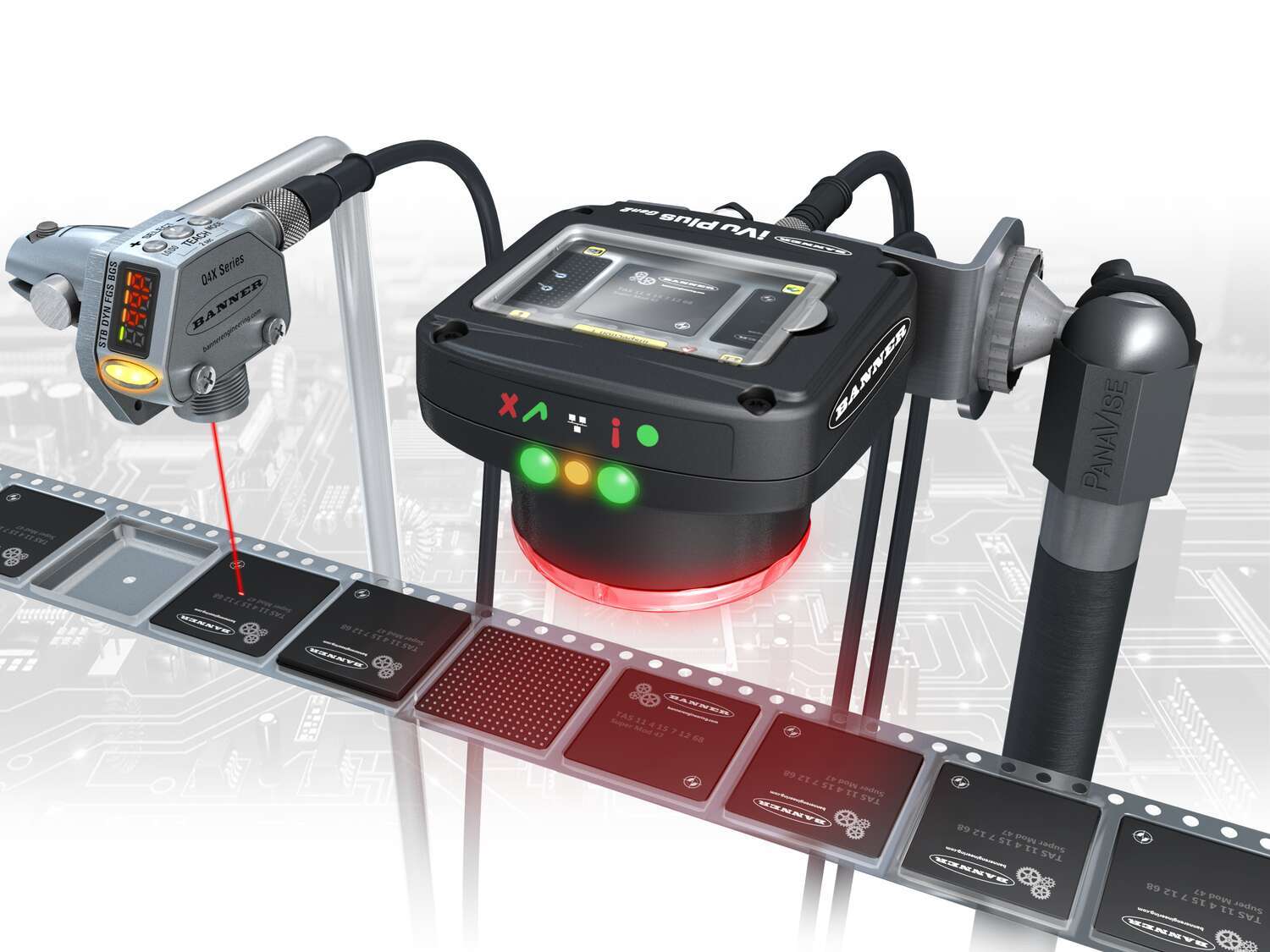Error Proofing for Integrated Circuit Chips Loaded into Pocket Tape

Customer Requirements: Confirm presence and correct orientation of an integrated circuit chip
Solution: Q4X Laser Distance Sensor and iVu Vision System
Why Banner? Versatility –A Q4X can perform multiple functions at once, reducing the need for additional sensors
Customer Benefits
Cost savings – Using fewer sensors to solve the application reduces costs of purchasing or replacing parts
Background
Integrated circuit (IC) chips are tested prior to installation onto a circuit board. After they pass quality tests, they are placed into pocket tape and spooled onto a reel. The tape and reel make transport and storage for such small components easy and simplify the way that the product is fed into assembly machines.
Challenges
Each IC chip is placed onto the pocket tape by a high-speed machine. Incorrectly oriented chips will result in improper installation onto a circuit board. There are three common failure modes with pocket tape: no chip in pocket, two chips in pocket, and one chip upside down in pocket. To prevent these errors from happening, each chip’s presence and orientation needs to be confirmed before it is sealed in the pocket tape. Multiple sensors are often used to identify these failures. Supporting multiple sensors can drive up expenses and lead to increased downtime required for maintenance and installation.
Solution
The Q4X laser distance sensor from Banner Engineering can complete all the functions previously performed by multiple sensors. This versatile sensor can be taught to recognize items at a specific distance, meaning that it can tell the difference between no chip, one chip, or two chips, in each slot as the chip passes. If the sensor reads the correct distance, this means that one chip is placed into the pocket tape. If the distance read is too short, this means a duplicate chip has been placed on top of the first chip. If nothing is sensed, or the distance is too long, this indicates a missing chip. In addition, used in dual mode, the Q4X will also detect differences in contrast to determine if a chip is right side up or right side down. The Q4X can detect all of these conditions (missing, duplicate, or right side down chips) and trigger indication that operator attention is required.
In some instances text or images, such as logos or lot codes, may be printed on the chips and it may be necessary to have these features all oriented that same direction. An iVu vision sensor can be used to determine the correct orientation of the writing by utilizing the powerful match tool. If there is no match, an operator is notified of the fail.
Conclusion
In an industry where components are required to be tremendously small, errors and bad product can be challenging to detect. Banner Engineering offers solutions that fit the needs of these applications. By using the Q4X and iVu vision sensor simultaneously, the manufacturer is able to detect three different types of errors and confirm writing orientation on integrated circuit chips. By using fewer devices, companies are saving time and money with an easy to use solution.

